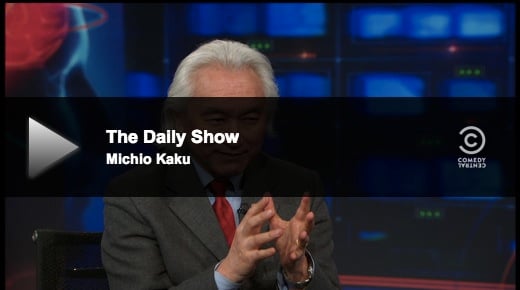What sits on your shoulders [the brain] is the most complex object in the known universe … We would have to build a computer the size of a city block, cooled by a river, energized by a nuclear power plant to mimic the computational power of your brain.”
Yup—the brain is fascinating. The quote above is from Michio Kaku, author of The Future of the Mind, as he discusses just how powerful the human brain is on The Daily Show. The 8-minute segment is worth it if you’re feeling like getting in touch with your theoretical-physicist-side.
For B2B marketers, time spent with your organization’s most technically minded experts is invaluable. Conversations with these brainiacs help develop our overall understanding so we can better connect the content we create with more technical target audiences.
Although this time is clutch for marketers, have you ever felt like top subject matter experts (SMEs), engineers or developers think marketing meetings are a waste? Change that perception immediately with smarter, more effective meetings—meetings that produce tangible and evergreen results.
If you had 20 minutes to spend with an engineer (or any very techy SME), how would you prep to make the most of that time? What would you organize or send ahead of the meeting, what would the agenda look like, and how would you follow up after? Within this post, we’ll offer a guide to SME meeting prep, agenda, goals and outcomes—all intended to help your marketing team foster a mutually beneficial and positive relationship between marketing and SMEs.
20 Marketing Content Ideas & Outcomes from SME Meetings
- Key Topic Transcripts: Always record your conversations when possible. If there are any key points of the conversation, like answers to common customer questions or pain points, transcribe these for other players on the team who would find them helpful (blog authors, customer service representatives, sales teams, etc.). Send these over to the SME for final approval prior to sending to other internal teams under that person's name.
- Podcasts: As long as you’re not discussing confidential or competitive information, post top answers in podcast format. Consider a SME series if you have enough useful information.
- Videos: Any of your FAQs rising in popularity? Share the news with your SME, and see if he or she would be willing to create quick video recordings, which can be used throughout digital properties and within internal training sessions. Note, if you’re doing this, send additional resources, questions and proposed talking points to your SME ahead of time.
- Graphics: Did you learn enough to create a “How It Works” infographic? Or more simply, can you highlight a specific stat or selling point from the conversation? Send SMEs the idea with a sketch before you put too many resources into it, and once you have the go-ahead, let your design team take it from there. Deliver the proposed final to your SME as a good-will gesture and last set of eyes.
- Whiteboard Session: If your SME has additional time and interest, consider recording a whiteboard session for video and graphic content. This sort of content can establish your internal SME and brand in the industry, and is really useful when it comes to explaining more in-depth topics.
- Bylined Article or White Paper: Review the notes from your conversation and identify any opportunities that align with industry editorial. If there’s a relevant topic, present it (along with a proposed abstract and supporting research) to the SME to see if they’re willing to put in time helping you develop an article in their name.
- Blog Content: Generate a few blog topics around your main discussion points. Build upon your SME’s information by pulling in industry trends and research to create useful and technically sound blog posts.
- Blog Author Page: If he or she doesn’t already have one, help your internal expert out by creating a blog author page and connecting it to a Google+ page. If they’re too busy, ask them to create a temporary Google password so you can do the project for them completely.
- Social Updates: Use sound bites, answers to top questions, and helpful resources as corporate or proposed SME social media updates.
- Comments: Do discussion topics align with recent industry articles? Draft proposed comments for influence articles or forums, and ask that SME (or most relevant industry-facing expert) to reply.
- Solution Elevator Pitch: Similar to No. 10, can anyone in your organization give the elevator pitch for specific product suites or solutions? Oftentimes, the way an SME describes a solution in person (read: simplified so a marketing pro can understand), is an ideal template for others. Keep this high-level one-pager handy, and share across teams as a talk-track.
- Case Studies: Did your engineer mention a specific project or customer? Look for publications where a published case study would be a win-win, and present the opportunity to the SME to pass along to a customer. With a few additional project details, marketing can do the heavy lifting with the draft and submission, and create evergreen case study content that’s helpful further along the sales cycle.
- Real-Time Tip Sheets & Product Cliff Notes: Share resources across development, marketing, sales and service teams. Use these working documents as reference points for each product or solution, and aim to house all relevant material in a central location. Update these resources with notes, graphics, talking points or potential quotes from SME interviews.
- Updated Battle Cards: Battle cards are one-sheeters that explain your brand or solution’s specific advantage when compared to the competition. Gain additional insight on top prospects, competitors or personas during your SME interview? Create battle cards if you don’t have them, or update them with new product introduction, features or competitive advantages.
- Top Prospect Discovery: Research an SME’s ideal prospect, its competitors, and why it’s a particularly good fit in your SME’s eyes. Take action with this information by combing through your existing lead database to look for contacts from this organization, or to look for those who most closely align. Adjust lead scoring based on specifics of the ideal customer profile. Then send your findings and follow-up to the SME to show you’re willing to go the extra mile to understand end-users and how to market specifically to them.
- Top Prospect Social Lists: While you’re completing the discovery research above, identify decision makers at said target company and add them to a private social list. Monitor what they read, who they follow, and when/if it’s appropriate, engage in a natural way.
- Curated Blog Post: Ask for the short-list of your SME’s must-read publications, then grab some of the most relevant articles for a quick, curated industry post. Mention influencers, and make it a recurring series if the posts are popular with your readers.
- Online FAQ: Are all of the common questions or general pain points mentioned by your SME listed within your website’s FAQs or resource pages? If not, you now have an opportunity to add them to the site.
- Updated Lead Nurturing Campaigns: New and interesting collateral that results from time with your engineers and SMEs is often great content for middle- or bottom-of-the-funnel leads and customers.Whether you’re creating a new workflow specific to this solution, or updating an existing, relevant workflow with new materials, use the latest from SMEs as an opportunity to refresh nurturing campaigns with links to new blog posts, articles, graphics, video or FAQs.
- Customer Tip Sheets & Resources: Take the internal resources a step further by crafting customer-facing tip sheets. Positioning your SME as a resource to existing customers builds loyalty, trust and expertise—especially within industries where referrals or word-of-mouth bring in the most qualified new leads.
Making the most of others’ time starts well before (and extends beyond) an actual call or meeting. Below are a few tips for getting the most out of time with SMEs.
Meeting Prep
“Before anything else, preparation is the key to success.” - Alexander Graham Bell
Foster a sense of purpose by clearly setting goals and expectations for the meeting; it signals that we respect another’s time. Go one step further with your actions (create an agenda, send items for review ahead of time, etc.) to immediately create value and set the tone for a productive meeting.
Outline your agenda. It may seem trivial for a quick, 20-minute session, but it aims to define your goal for the time, keep those minutes on target, open the window for your SME to add additional line items, and set the standard that this time is valued.
SPOTLIGHT: Awesome Agendas
Include an agenda right in the body of your calendar invite, and send it at least a few days in advance. So what should be included in the agenda, and why? Following are critical components:
- Focus Topic: What’s the meeting all about?
- Logistics: Be sure to cover the administrative tasks, such as:
- Who is invited?
- What time? Communicate across time zones to avoid confusion.
- Will attendees call into a virtual meeting, or meet in person? Either way, provide details on timing and location.
- Are there any steps that need to be taken ahead of time to ensure attendees are ready at kickoff (consider everything from materials to review, to the latest virtual meeting software downloads)?
- Meeting Goal or Outcome: At then end of the 20 minutes, or full-day summit, what do you hope to achieve? Including this in the agenda helps others get onboard and focused before the meeting even begins.
- How You’ll Get There: These are the line items that work toward the overarching topic and goal. Define what should be covered, along with who will lead that part of the meeting.
- Owners and Action Items: If you expect action items as a result, communicate those opportunities early to put on attendees radars. When following up post-meeting, you already have template notes.
Maximize Meeting Minutes
There are items that you can handle before, during and after the meeting to make the most of everyone’s time. For example, ask to record the meeting, and jot down the highlights in notes that can be doubled as a meeting recap. For the bulk of conversation (and to make sure you can turn the meeting into something valuable after), consider a few of the following discussion points. These can be mixed in, or tackled over time.
- Performance Update: Set the stage. Show SMEs a couple recent projects marketing has completed that relate to his or her job, or the activity at hand. If it isn’t your first meeting, build on some of the latest projects you’ve worked on together to show the value these sessions can have on the business.
- Target Industry and Personas: Confirm target personas are correct for this specific project, and ask about specifics of which marketing / online search may not be aware.
- Target Prospects: Ask about top prospects—who are the ideal B2B targets for this solution, who are we writing for, and what would that win mean to the business?
- Format: Ask your SME about his or her preferred method for digesting the information at hand (tip sheet, white paper, diagrams). Chances are, your target personas (other SMEs, engineers) will have a similar preference.
- Top FAQs: Ask to list the 3-5 questions SMEs are asked most often, or confirm a list you’ve created ahead of time—and discuss the answers to top questions.
- Identify Pain Points: Ask about the biggest pains or challenges (great for the project at hand, and also key for future buyer persona reference). How can primary or industry research, demos, case studies or SLAs help customers overcome these common challenges?
- Interview Q&A: Here’s the heart of the meeting. You’ve likely sent questions in advance, so run through any additional questions and responses together to ensure you’re on the same page, and to build confidence from this internal expert.
- SME Resources: Ask about the resources he or she reads every day to do their job (buyers guide, tech spec sheets, etc.); is it OK to work these assets into marketing materials? Chances are, they’ll help personas too.
- Feedback: Solicit feedback on content produced so far (quality, accuracy, how the product is represented to date in current marketing materials, etc.). Open the door for this type of two-way communication in person.
- Next Steps: Ensure your SME that you’ll send summary notes and action items his or her way, then deliver on that promise within the next 12-24 hours. Remember to create value and do most of the heavy lifting when it comes to summaries and next steps to signal that you’re not trying to make more work for your SME.
At the end of the day, it’s up to you to get the most from your organizations most valuable assets: thought leaders and their time. Taking extra initiative on these simple meetings, and continually fostering the relationship by sending specific outcomes (qualitative feedback or wins, and quantitative metrics), builds internal champions.
What are some of the most creative or popular marketing activities that are a direct result of SME insight? And how are you continually building that relationship between marketing and internal experts? Such an important audience—interested in your thoughts!

%20Logo_BlueOrange_Trademark.png?width=800&height=269&name=Ready%20North%20(RN)%20Logo_BlueOrange_Trademark.png)




.jpg?width=300&name=Services%20Hub%203%20(3).jpg)



